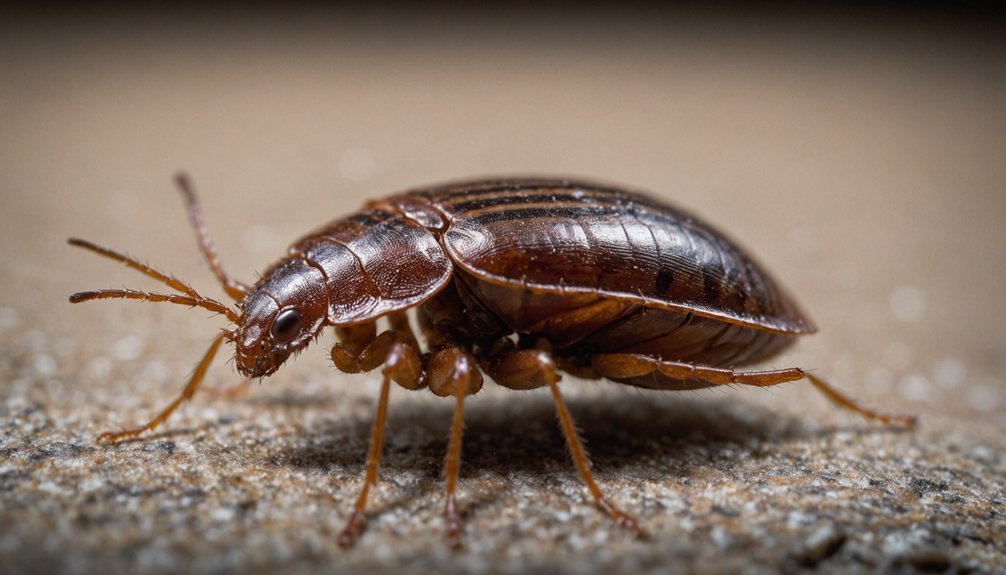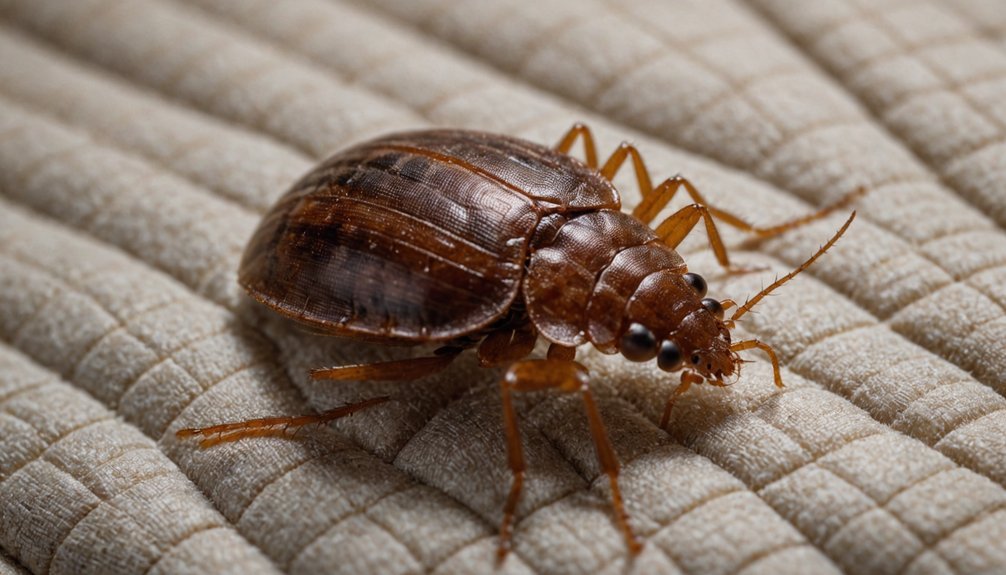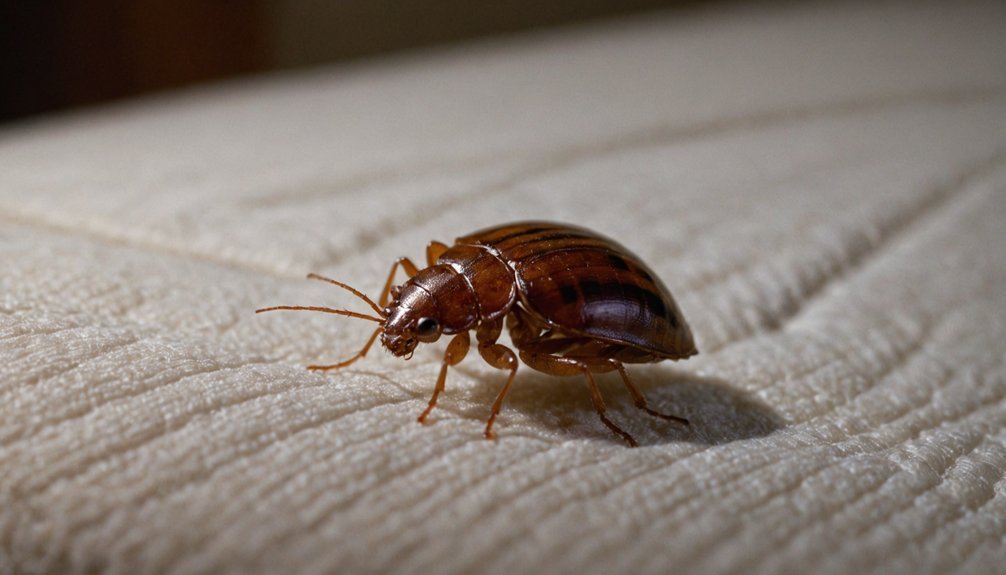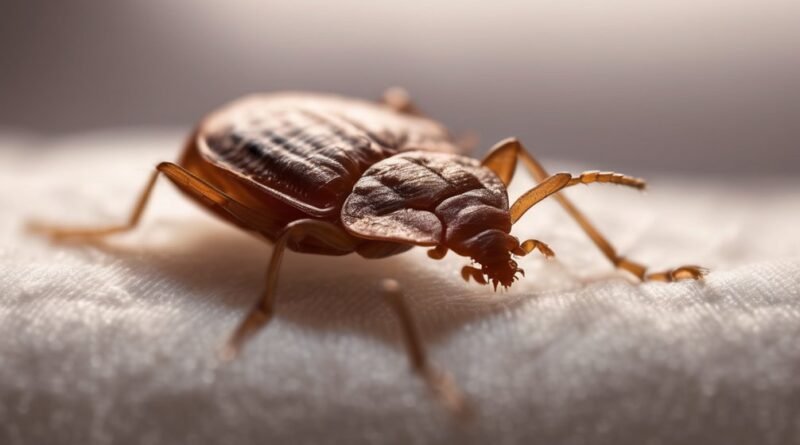Do Bed Bugs Jump or Fly? Common Myths Explained
You’ve probably heard conflicting stories about how bed bugs move around your home. While these persistent pests can show up almost anywhere, they won’t jump onto your bed or fly across the room. The reality of bed bug movement is both simpler and more concerning than many people think. Understanding how these insects actually travel will help you spot early warning signs and protect your living space from unwanted visitors.
Key Takeaways
- Bed bugs can only crawl and are physically incapable of jumping or flying, despite common misconceptions.
- Adult bed bugs move at speeds of 3-4 feet per minute by crawling along surfaces and through small cracks.
- What appears to be jumping is often quick crawling movement or misidentification of other insects like fleas.
- Bed bugs travel by hitching rides on furniture, luggage, and clothing rather than jumping between locations.
- The insects possess vestigial wing pads and six legs designed for crawling, with no ability for aerial movement.
The Truth About Bed Bug Movement

How do bed bugs actually get around? Despite common misconceptions, these pests can’t fly or jump – they can only crawl. While they’re relatively quick for their size, they typically travel 5-20 feet from their hiding spots to find food.
Despite being nimble crawlers, bed bugs lack the ability to fly or jump, typically moving just 5-20 feet to feed.
You’ll find bed bugs moving along baseboards, behind wallpaper, and through electrical outlets as they search for hosts. They’re drawn to your body heat, carbon dioxide, and odors, helping them locate you while you sleep. Since they are nocturnal feeders, bed bugs are most active and hunt for blood meals after midnight.
During the day, they’ll squeeze into tiny cracks and crevices, preferring to stay hidden in tight spaces.
These insects are masters at hitchhiking, catching rides on your luggage, clothes, and furniture. This passive transport is actually their primary method of traveling long distances and spreading between buildings.
Understanding Bed Bug Anatomy

Bed bugs possess a remarkable anatomy that enables their survival and feeding habits. You’ll find their apple seed-sized bodies divided into three main sections: a broad head containing sensory organs, a thorax with six legs attached, and an expandable abdomen that swells during feeding. Adult bed bugs typically measure 5 to 7 millimeters in length.
| Body Part | Key Features | Function |
|---|---|---|
| Head | Compound eyes, 4-segment antennae | Sensing movement, detecting hosts |
| Thorax | 6 legs, vestigial wing pads | Crawling, clinging to surfaces |
| Abdomen | 11 segments, hunger folds | Blood storage, expansion |
| Body Surface | Tough exoskeleton | Protection, concealment |
Their flattened, oval shape lets them hide in tiny cracks, while their specialized proboscis pierces skin to draw blood. You can identify males by their pointed abdomen tips, while females have rounded ones.
How Bed Bugs Actually Travel

Unlike many household pests that jump or fly, bed bugs rely solely on crawling to get around, moving at speeds of 3-4 feet per minute.
When seeking a host, they’ll follow a zigzag or spiral pattern, traveling up to 20 feet from their hiding spots to feed.
You’ll find these pests are expert hitchhikers, spreading primarily through passive transport on furniture, luggage, and clothing.
They’re particularly drawn to dirty laundry and can easily move through wall voids, utility lines, and heating ducts in buildings. Their flattened body design allows them to squeeze through the tiniest cracks and crevices.
If you live in a multi-unit building, they’ll readily spread between apartments through shared spaces.
Their movement patterns change based on hunger levels and temperature.
Starved bed bugs move faster and are more likely to venture into new areas searching for food than their recently fed counterparts.
Dispelling Common Misconceptions
Despite their notorious reputation, many common beliefs about bed bugs are simply untrue.
These pests can’t jump or fly – they only crawl. If you’ve seen what looks like a jumping bed bug, you’re likely observing either quick crawling or a different insect altogether, like a flea.
Instead, bed bugs commonly spread by hitching rides in luggage, purses, and other personal belongings that people carry.
You might think bed bugs only infest dirty places or urban areas, but they’ll settle anywhere they can find human hosts.
Cleanliness isn’t a factor; they’re equally likely to appear in spotless homes and five-star hotels as in less sanitary conditions.
Don’t fall for the myth that pesticides alone will solve your bed bug problem.
These insects have developed resistance to many chemicals, which is why professionals use integrated approaches combining heat treatment, thorough cleaning, and targeted pesticide application.
Prevention and Control Strategies
When it comes to preventing and controlling bed bugs, understanding disclosure to tenants plays a vital role, as landlords in many cities are now required to inform potential renters about any bed bug infestations that occurred in the previous year.
Conclusion
You’ll be relieved to know that bed bugs can’t jump or fly – they’re strictly crawlers. While they move quickly at 3-4 feet per minute, their anatomy simply doesn’t allow for aerial movement. Understanding their true mobility helps you better protect your home through targeted prevention methods. Focus on sealing entry points, regular inspections, and proper bed placement to keep these persistent crawlers at bay.

